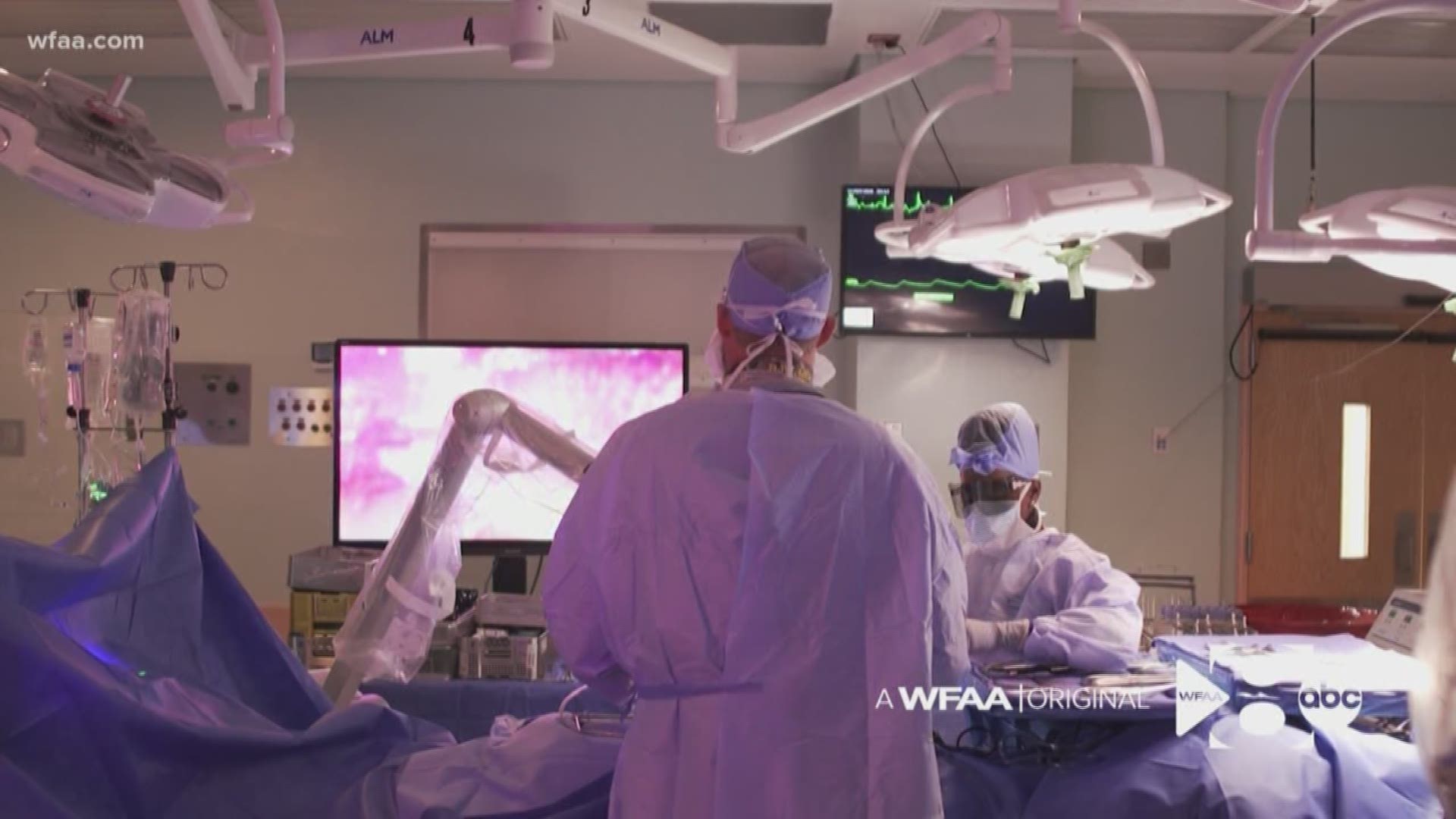DALLAS — It was 6:30 a.m. on a Friday and the surgical suite at the VA North Texas Health Care System was already busy.
Nurses scrubbed in and carefully laid out instruments in operating rooms. Teams were assembled. Patients were moved into place.
Doctors perform more than 7,500 operations a year at the VA, but new technology arrived at the end of 2018 that revolutionized how some of those surgeries can be performed. "It’s going to make a difference for our veterans,” said Dr. Bryan Wohlfeld, chief of neurosurgery since 2013.
Before scrubbing in and entering operating room no. 8, Wohlfeld put on 3-D glasses. The revolutionary new technology allows him to perform surgery in 3-D. “It’s just tremendous,” he said. “You feel really immersed in it," he said.
Dallas is the only VA in the nation using a 4-K, 3D video microscope called an Orbeye.
We watched as Wohlfeld operated on a veteran’s lower spine and used the Orbeye as a guide.
Instead of using magnifying surgical loupes on his glasses or a microscope that might have him hunching over, Wohlfeld operated while looking straight ahead at a 55-inch high definition monitor.
He gently moved the Orbeye when he needed to change his perspective. “To be able to move this into positions to see things I hadn’t been able to see before is really very helpful,” he said.
Even though the anatomy hasn’t changed, the technology makes it feel like he’s immersed deep in the incision.
“With what we do, fractions and millimeters can make a difference as can how gentle we can be manipulating tissue to remove things that are causing the problem,” he said.
“I think it’s going to provide us that edge to do things even safer, with greater precision and accuracy, which really makes a difference in our field,” said Wohlfeld. “And not only that, it lets everyone in the room see what I see - which I think is the real difference maker.”
Because everyone in the operating room, from residents in training to nurses, can see the live 3-D video, surgical nurses can better anticipate a doctor’s needs, which can save time in a room where moments matter.
“This is a game changer,” said peri-operative nurse and navy veteran Winston Centeno. “With this, you have high-definition monitors and everybody in the room can appreciate landmarks and anatomy at the same time.”
Wohlfeld said what matters most to him are his patients – all veterans. “This really lets me promote my mission of providing the best care I can possibly provide for them, as well as training the next generation of surgeons,” he said.
“We’re seeing younger and younger vets coming back from conflict, sometimes with injuries that they’ve been trying to live through. At some point, it reaches a point that they can’t take it anymore. We’re doing our best to help them.”
Centeno said he is delighted to see this technology at a VA.
“If I had my way, I’d be back in active duty. But this is the way I can give back,” he said. “If can do it one patient at a time, that’s the way I can deliver it.”

